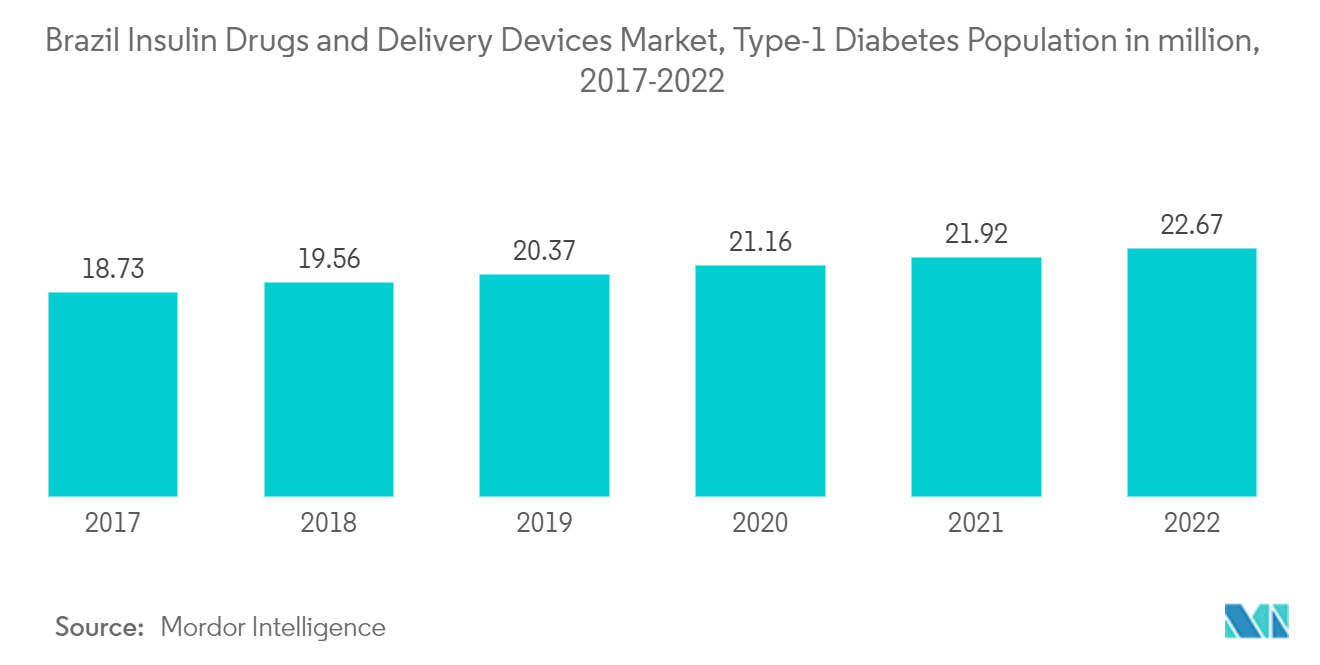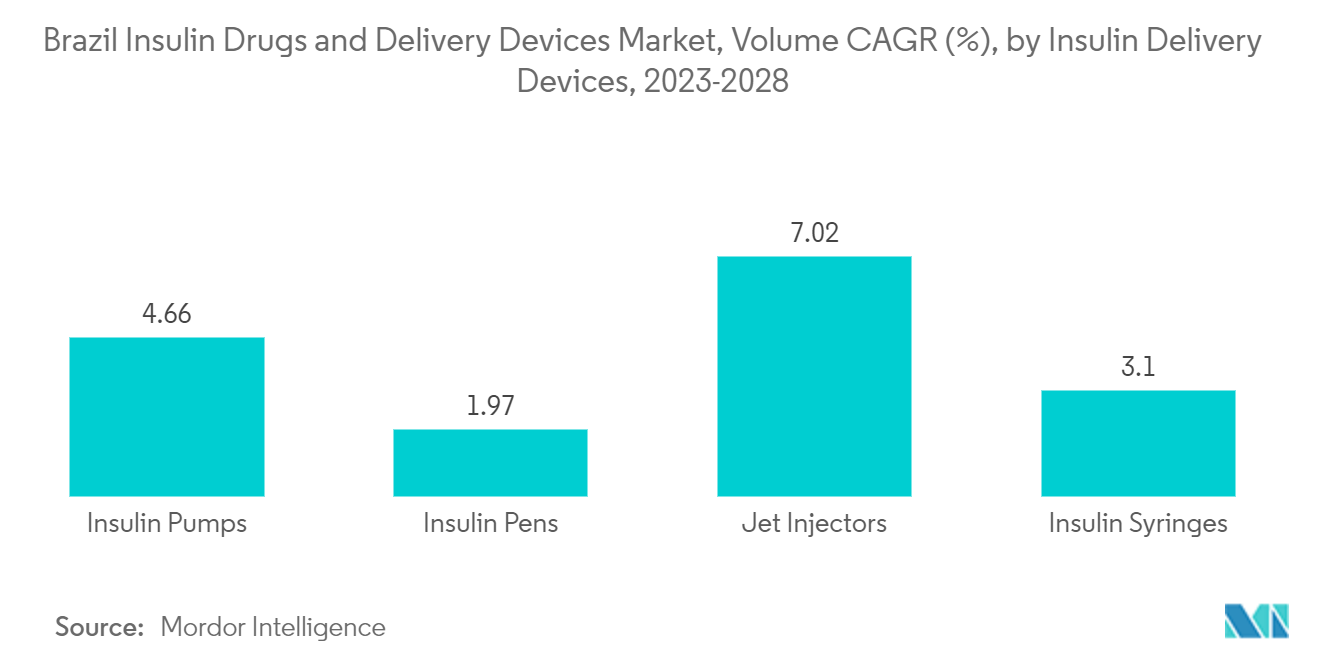Market Trends of Brazil Insulin Drugs & Delivery Devices Industry
Rising diabetes prevalence
The diabetes population in Brazil is expected to grow by about 2.9% over the forecast period.
According to IDF Diabetes Atlas 2021, 15.7 million adults, about 10.5%, had diabetes in Brazil. The cost of diabetes-related health expenditure in Brazil is the third highest in the world. In addition, 18 million adults, around 11.9%, includes Impaired Glucose Tolerance, which places them at high risk of developing type 2 diabetes. 32% of people living with diabetes in Brazil are undiagnosed. Additional data on glycemic control in Brazil show that only 25% met the therapeutic goal of glycated haemoglobin (HbA1c) < 7% before the pandemic, as recommended by the Brazilian Diabetes Society (SBD).
In Brazil, the public health system (Sistema Único de Saúde; SUS) progressively increased the assistance available for individuals with diabetes. The Ministry of Health established a list of medications and supplies the Brazilian Health System (SUS) provided to patients suffering from diabetes. However, their supply is usually insufficient or recommended for optimal patient management across cities. The high prevalence of diabetes is associated with a significant economic burden.
When diabetes is undetected or inadequately treated, people with diabetes are at risk of serious and life-threatening complications, such as heart attack, stroke, kidney failure, blindness, and lower-limb amputation. These result in reduced quality of life and higher healthcare costs, leading to a greater need for access to care. Various evidence suggests that diabetes can be successfully managed, especially when detected early. Multifactorial intervention, including control of blood glucose, blood pressure, and lipids, can reduce the range of diabetes-related microvascular and macrovascular complications and premature mortality.
Therefore, owing to the increasing diabetes prevalence, the studied market is anticipated to grow over the analysis period.

Insulin disposable pens hold the highest market share in the insulin delivery devices segment in the current year
Insulin Disposable Pens occupied the highest market share of about 58% in the insulin delivery devices segment in the current year.
A disposable insulin pen contains a prefilled amount of insulin. When the pen is empty, it is thrown away. Insulin pens are much smaller, more portable than syringes, and contain the medicine preloaded into the delivery mechanism. The needles are easy to use and can be disposed of by twisting or snapping. The pens are usually colour-coded, making it easier to know which type of insulin and how much it will be received from them. The disposable insulin pens are considered more consumer-friendly, as they are smaller and less noticeable than the classic vial-and-syringe. These devices are also more portable for consumers. Some pens are smart insulin pens that easily connect to an app on the phone to monitor blood sugar levels and remind when to take the next insulin dose.
The high prevalence of diabetes is associated with a significant economic burden. The costs of diabetes are increased in patients with co-morbidities such as hypertension and hyperlipidemia and who develop complications. Costs increase with an increasing number of complications. The Federal Government of Brazil partnered with numerous private companies to primarily utilize their supply chain (manufacturing, distribution, and retailers) to ensure low device prices. Such factors helped the increased adoption of these products in the Brazilian market.


